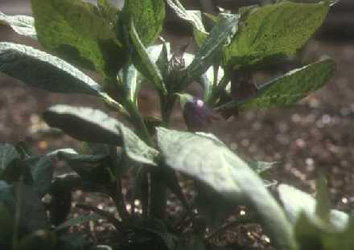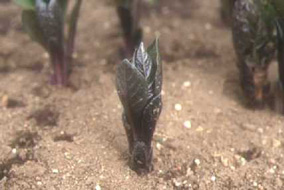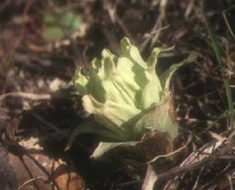Tokyo Food Safety Information Center » Good things to know » Poisonous plants easily mistaken for harmless ones » Japanese belladonna (Solanaceae)
Japanese belladonna (Solanaceae) |
||||||||||||
|
Perennial plant that grows 30 to 60 centimeters high with oval leaves that have a sharp point. In spring, its bell shaped red and purple flower blooms downward. It has a round shaped fruit and its seed falls off after it ripens. If ingested by mistake, it causes hallucination and running around in pain. Such consequences are the origin of its name. Characteristics
|
||||||||||||


